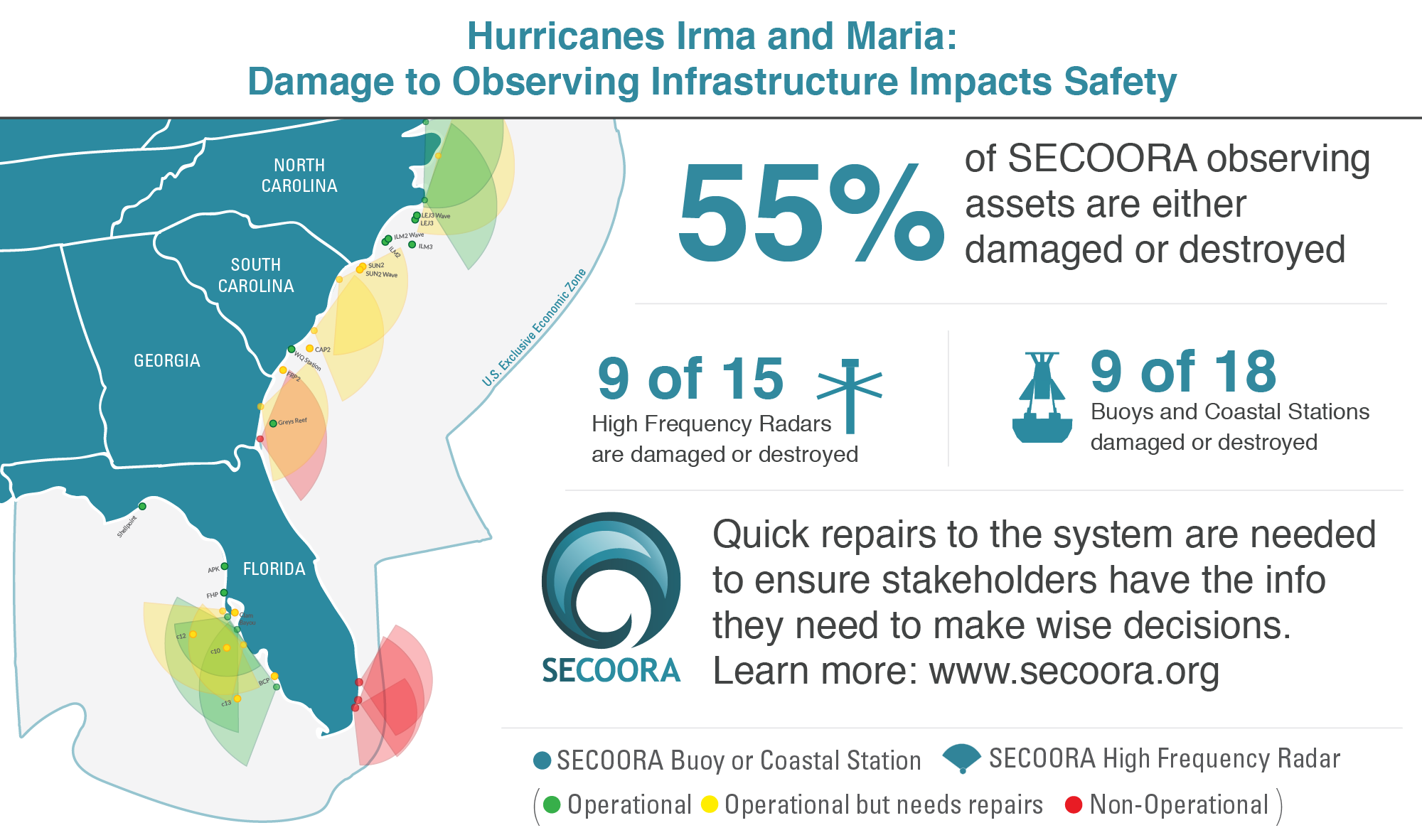University of North Carolina Wilmington’s Coastal Ocean Research and Monitoring Program (CORMP) operate meteorological and oceanographic buoys off the North Carolina and South Carolina coasts. The buoys provide real-time weather, sea state, and water quality data for use by the public, as well as the scientific and public safety communities.
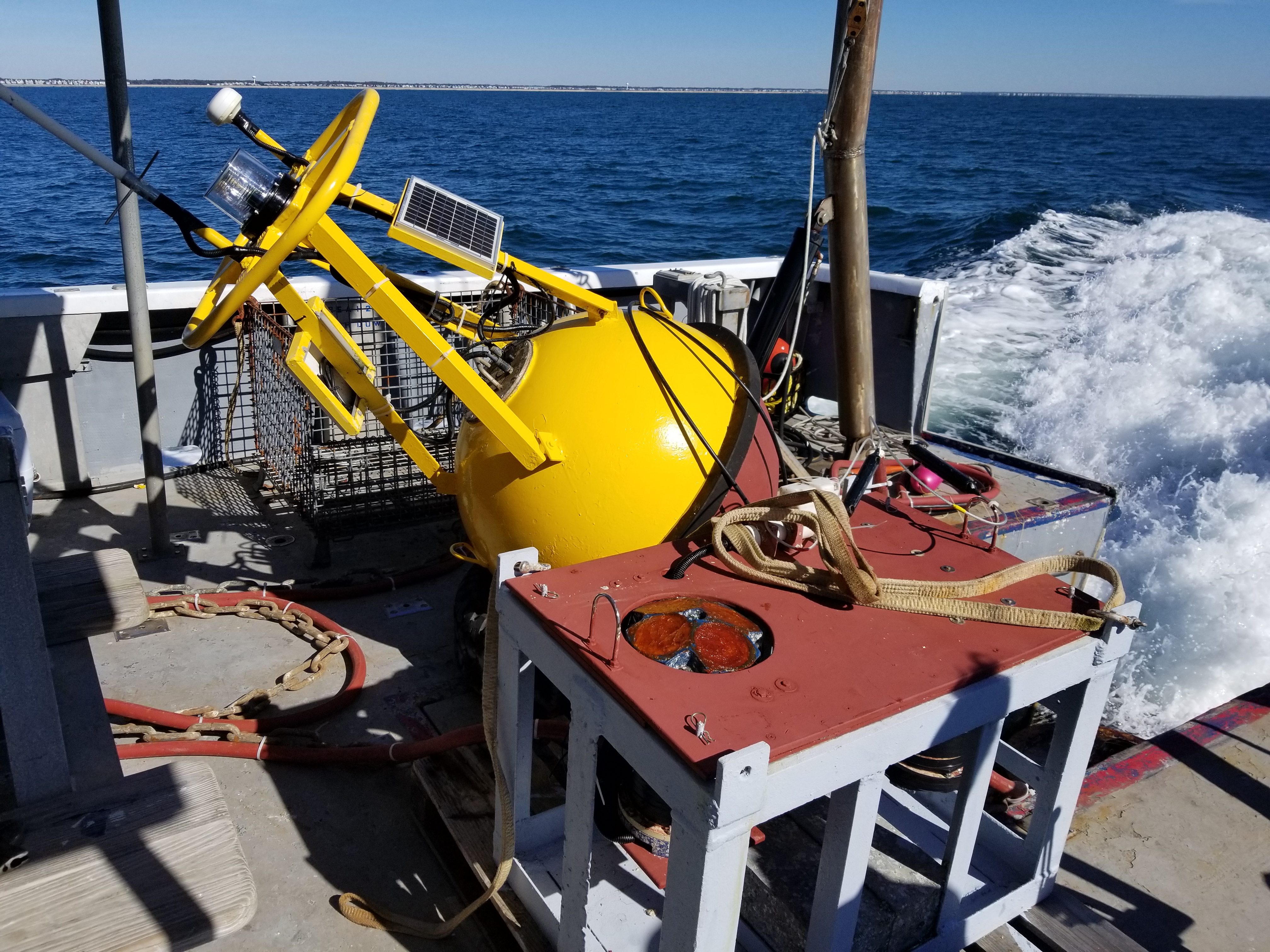
CORMP deploying SUN2wave buoy in February. The buoy is located off the coast of Sunset Beach, NC. Image credit: Brett Bolton, UNCW CORMP
Unfortunately, some of these buoys were damaged by the active 2017 Hurricane season. Solar panels and cables were damaged by the strong winds and tall waves. CORMP technicians have been working to get the buoys and sensors ready for deployment.
SECOORA’s observing infrastructure took a major hit during the 2017 hurricane season – 55% of our observing assets are either damaged or destroyed. This critical infrastructure informs us as to whether our ocean ‘highways’ are safe for work and recreation. Without data, our ability to forecast and respond to future disasters in our region will be significantly impact.
In February, CORMP redeployed the SUN2Wave buoy which is located off the coast of Sunset Beach, NC. The buoy provides bottom currents, surface currents, water temperature, and wave measurements. It communicates with a bottom mounted Acoustic Doppler Current Profiler (ADCP) and data is transmitted every hour.
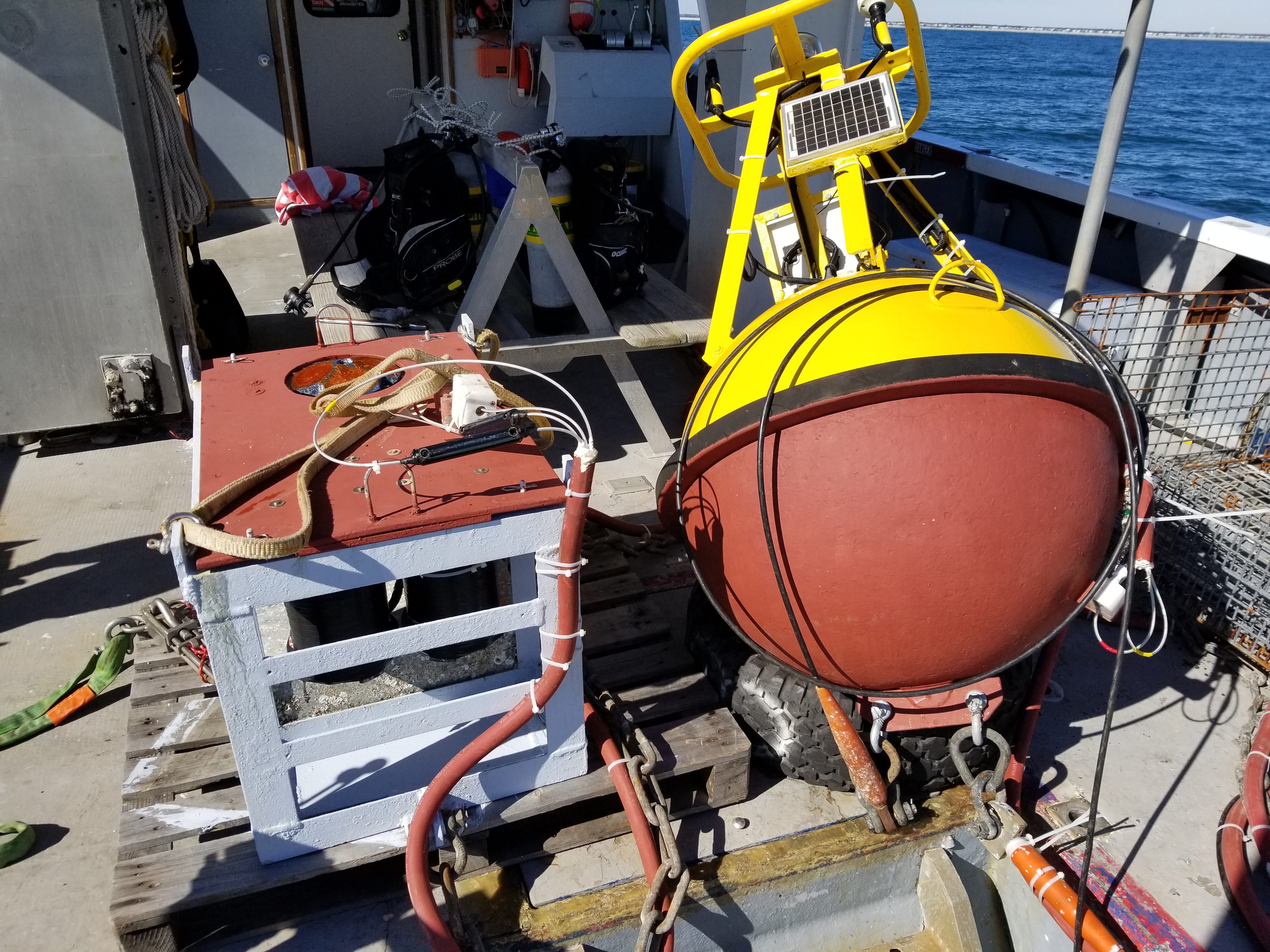
Another view of the SUN2wave buoy being deployed February. Image credit: Brett Bolton, UNCW CORMP
CAP2, located northwest of the Charleston Harbor entrance, was also damaged by Hurricane Irma.
According to Peter Mohlin, meteorologist with the NOAA National Weather Service’s (NWS) office in Charleston, SC, the NWS depends on data from CAP2 to produce and verify the forecast for the Atlantic waters off the Charleston County coast. In addition, they use CAP2 buoy data to verify severe weather – such as high winds of 34 knots or greater for Special Marine Warnings – and during tropical cyclone events.
CORMP technicians place a priority on the timely repair of any damaged or non-reporting buoy. The modular design of the buoy sensors and datalogging system allow for equipment to be simply swapped out at sea by technicians while working from a small workboat.
“As soon as we notice a problem with a buoy, we start prepping to fix it. When we do get the right weather to go out, we go with lots of spares, as you never know what you’re going to find when you get out there.” – Christopher LaClair, UNCW CORMP Technician.
In April, CORMP technicians will go to sea onboard the RV Savannah for a regularly scheduled buoy replacement cruise. The FRP2, CAP2 and SUN2 buoys will be swapped for new moorings. CORMP aims to replace buoys after they have spent a year at sea, ensuring continued accurate measurements.
NC and SC buoys are maintained by Coastal Ocean Research and Monitoring Program at the University of North Carolina Wilmington Center for Marine Science with funding from the NOAA led U.S. IOOS and SECOORA.
Related news
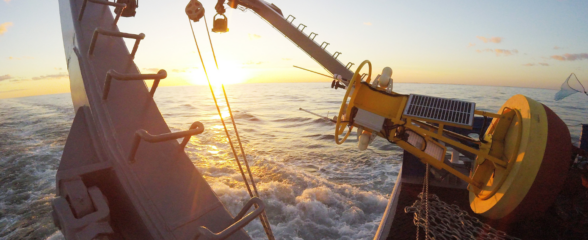
Funding Cuts to NOAA IOOS Will Hurt the Southeast
Proposed federal funding cuts would eliminate the IOOS Regional Observations budget for next year. Contrary to the budget Congress has already approved for this year, the Executive Branch wants these proposed cuts to go into effect in 2025.
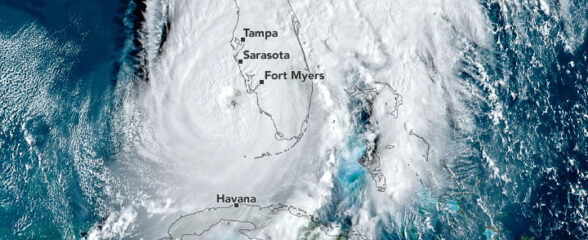
SECOORA Webinar on the Rapid Intensification of Hurricane Ian: Warm Subsurface Water on the Wide Continental Shelf
Join us Thursday, April 24th at 12 PM ET for the April installment of the SECOORA Coastal Observing in Your Community Webinar Series! This month, we will hear from Dr. Yonggang Liu from the University of South Florida. He will discuss his research on the rapid intensification of Hurricane Ian in relation to anomalously warm subsurface water on the wide...

Webinar: SECOORA Data Portal Demo
Join us on Thursday, February 20, 2025 at 1:00 PM ET to learn more about the SECOORA Data Portal and how to navigate it. Axiom Data Science will be providing an overview of the portal, including how to search the Catalog and make a custom data view.
